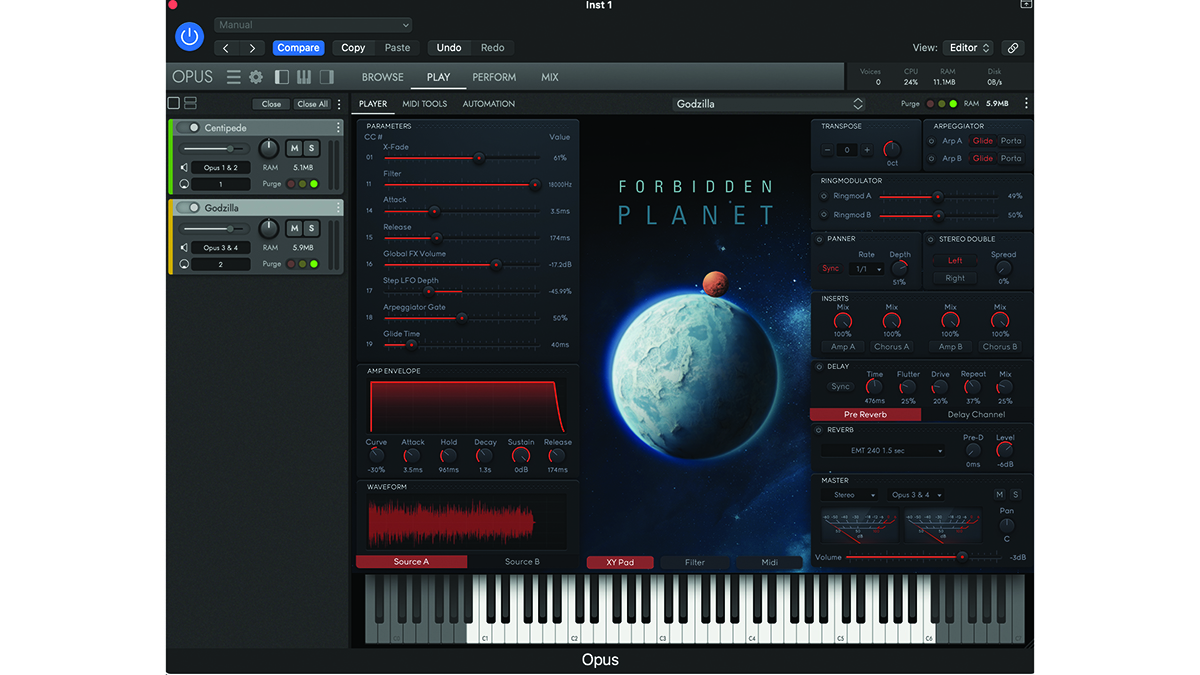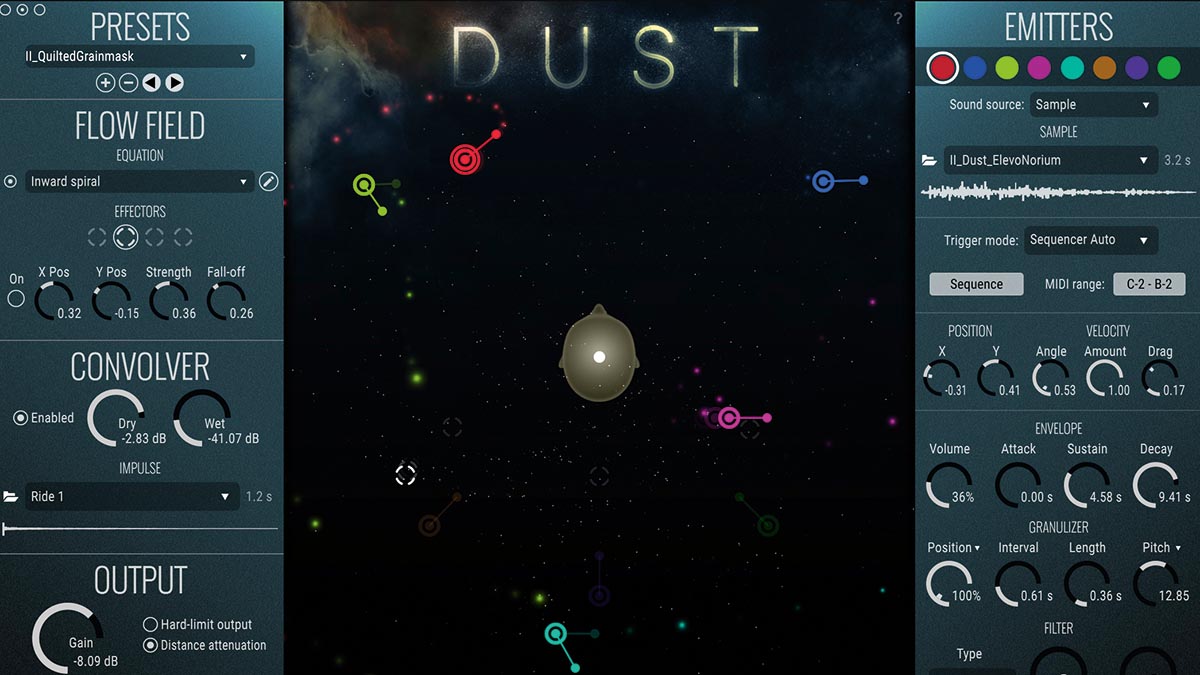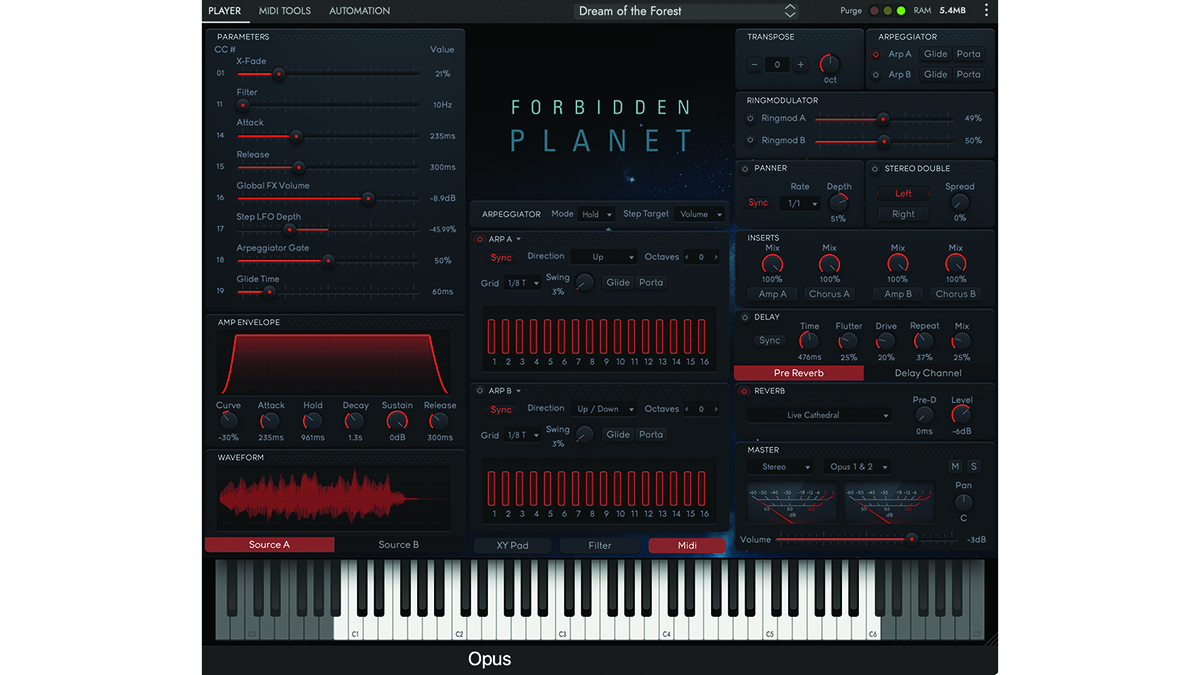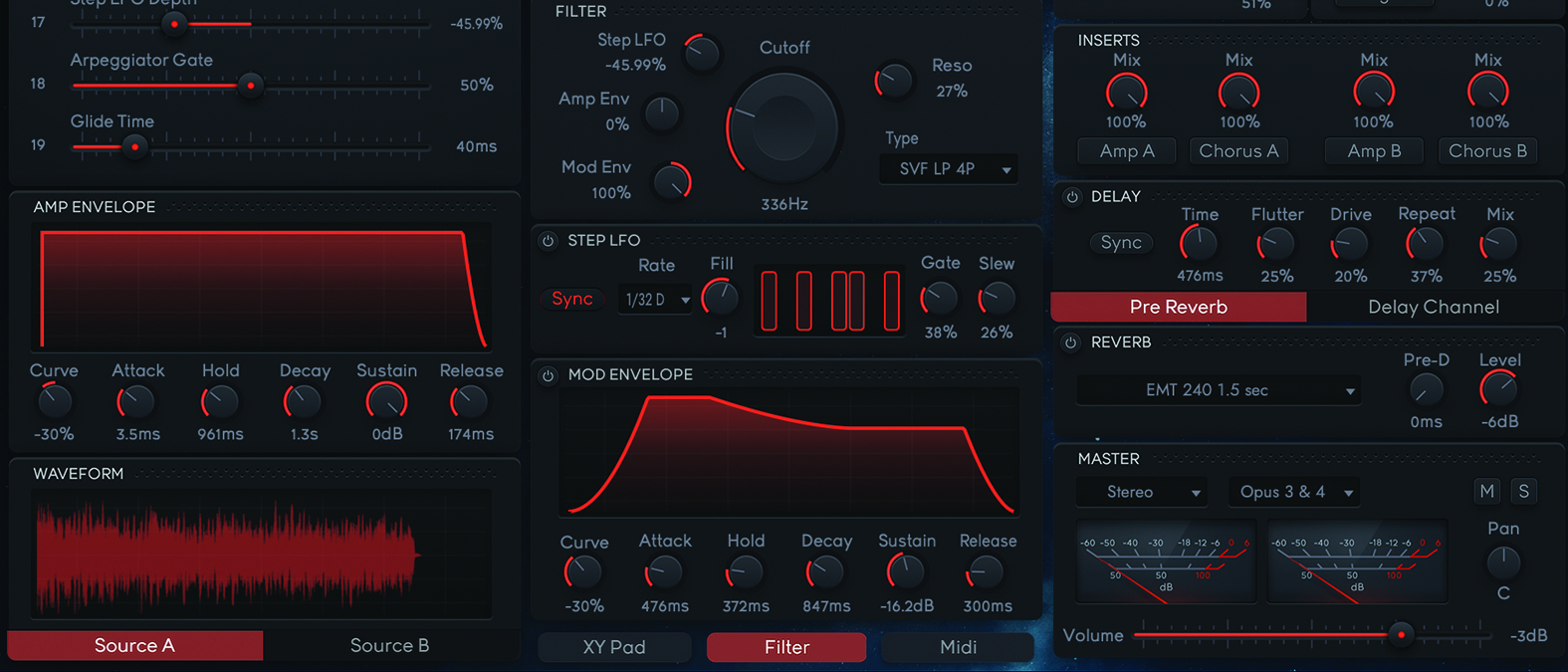MusicRadar Verdict
A dense star field of malleable textures, synths and ever-shifting drones and FX. All the space-faring sound you could need.
Pros
- +
More than 600 dual-layered synth and FX instruments.
- +
Wide-ranging filter options and expansive envelope shaping.
- +
Simple arpeggiator function allows creation of polyrhythms and movement.
Cons
- -
Will swallow that RAM!
MusicRadar's got your back
EastWest Forbidden Planet: What is it?
Widely known for its vibrant range of meticulously captured cinematic string libraries – particularly the elegant Hollywood Opus collection – EastWest Sounds’ first bona fide synth collection is fittingly epic. With a name like ‘Forbidden Planet’, and a UI which underscores its futuristic niche, this dense assortment of sounds is squarely aimed at those who want to wrangle the types of pulsing, morphing electronic textures that permeate modern science fiction and fantasy.
Unlike traditionally genre-aligned packages, EastWest’s innovative new engine allows for a greater array of sonic control, with delicate morphing between multiple layers paramount to the engine. There’s also a trove of finer-detail shaping abilities here, like the deep levels of modulation control, and a colourful arsenal of rhythmic options on hand. All in all, there’s a whole new multiverse to discover.
Starship blooper
The fundamental concept for Forbidden Planet began when producers Doug Rogers and Nick Phoenix elected to deviate from the usual oscillator-leaning approach and instead work towards building a hybrid beast, melding sound layers from acoustic sources, orchestral instruments, choirs and a range of deftly curated sound effects. Harnessing EastWest’s adept Opus engine, they realised a synth that draws on a rich well of instrumental texture.
Within Forbidden Planet are 645 of said mouth-watering patches and a detailed workstation for sculpting and contorting these forms into something entirely new.

EastWest Forbidden Planet: Performance and verdict
Upon loading the software within EastWest’s OPUS shell, and switching to the PLAY page, the first thing to notice is the central image of a planetary body. This isn’t just for aesthetic purposes. Instead, the planet – or rather its small moon – serves as an interactive XY pad, letting you crossfade swiftly between the patch’s dual layers, or adjust filtering or any of the other assignable left-hand side parameters. Neat.

• Soundmorph Dust
With a motion-based approach, the wealth of pads, shifting leads and more on offer here is astronomical.
• Omnisphere 2.8
The big beast of the sound design world, this is the synth-universe’s Starship Enterprise.
Forbidden Planet neatly locks in step with Opus’ cleanly organised pages. On the Browse page, we see the eight main folders – consisting of Bass, Drones, FX, Leads, Pads, Poly Synths and a stack of pulsing Arpeggiator-aimed ripples. One of the best things about traversing this deep well of sound options is a nifty auto-audition feature, playing a short motif with this currently hovered-over patch, this saves a lot of time.
It’s clear that a large swathe of these patches are solid from the outset, and designed to be dense, multi-charactered tension and drama-builders. While many are ready to go, self-shifting themselves into being a swirling sound design canvas (particularly those in the FX and Drones category), it would be foolish to neglect the wealth of filter shaping control available.
Using the pop-up Filter section provides a swift way to capture and bottle those sweet spots, work out gated rhythms with the Step LFO option, as well as the tantalising invitation to apply an envelope to the filter cutoff, allowing the automation of its movement with each note. Results will vary, and that’s exciting.

Step on it
Forbidden Planet’s twin arpeggiators can be used to craft delicate up/down ripples through the selected patch and when used in tandem can breathe new life into static sounds. With each arp corresponding to one of the patch’s two sound layers, it’s easy to maintain the character of the foundation patch, yet add more subtle rhythms and pulses by triggering a staccato or legato pattern.
Each arp has its own sequencer, so you can really go to town enhancing the interplay by muddying the sound, speed, octaves and direction. It’s easy to build polyrhythms and have a basic, self-sufficient rhythm track operating within just one sound patch. Another way in which Forbidden Planet lets you carve the best out of this expansive sound forest.
Verdict
Forbidden Planet is nothing short of a sci-fi soundscape designer’s playhouse; fully loaded with staggeringly assembled synths, exemplary control of movement, layer transitioning and more.
A word of caution: during tests, we regularly experienced lag when going too far down multi-voice directing wormholes, so make sure your hardware is up to it. But that’s not to stop us from declaring Forbidden Planet a brave new world of synth design.
MusicRadar verdict: A dense star field of malleable textures, synths and ever-shifting drones and FX. All the space-faring sound you could need.
EastWest Forbidden Planet: The web says
"When viewed as part of a Composer Cloud+ subscription, Forbidden Planet is an excellent and much-needed edition to the EastWest catalogue."
MusicTech
EastWest Forbidden Planet: Hands-on demos
EastWest Sounds
Simeon Amburgey
Mattias Holmgren
EastWest Forbidden Planet: Specifications
- MINIMUM SYSTEM: Quad-core (four cores), running at 2.7 GHz (or above). 16 GB. macOS 10.13 (or later); Windows 10 with ASIO sound drivers. HDD (7200 rpm, non-energy saving).
- RECOMMENDED SYSTEM: Octa-core (eight cores), running at 2.7 GHz (or above). 32 GB or more. macOS 10.13 (or later); Windows 10 with ASIO sound drivers. SSD (SATA or PCIe).
- CONTACT: EastWest/Sounds Online
Computer Music magazine is the world’s best selling publication dedicated solely to making great music with your Mac or PC computer. Each issue it brings its lucky readers the best in cutting-edge tutorials, need-to-know, expert software reviews and even all the tools you actually need to make great music today, courtesy of our legendary CM Plugin Suite.
“Excels at unique modulated timbres, atonal drones and microtonal sequences that reinvent themselves each time you dare to touch the synth”: Soma Laboratories Lyra-4 review
“I used everything I knew about music”: How Green Day exceeded expectations with their most ambitious song
YouTube just added AI tools that makes musicians, library music and video editors redundant











